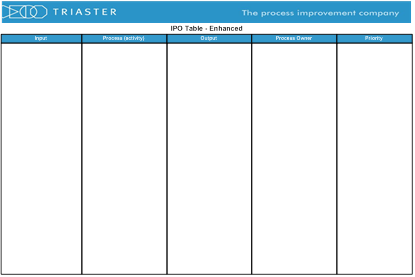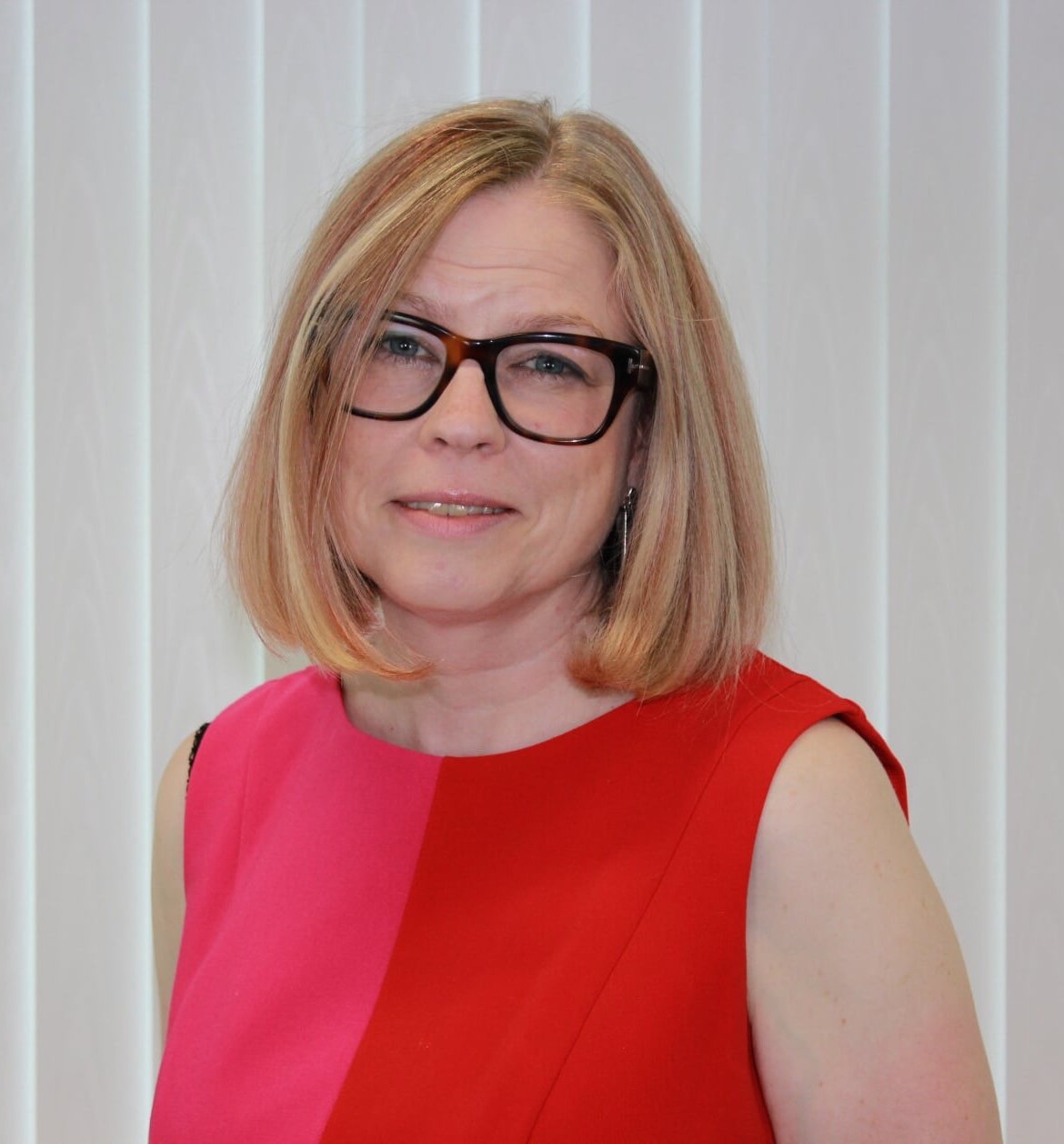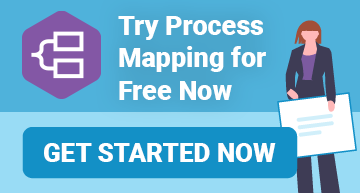Sometimes - particularly under the current circumstances - you just can’t get everyone in the same room for a process mapping workshop, so the only answer is to set up a virtual Process Mapping Workshop. This article explores how to run a successful workshop when everyone can't be in the same room.
There are six key stages to running a successful virtual Process Mapping Workshop:
- Preparing for the process mapping
- Preparing for the virtual meeting
- Running the virtual process mapping workshop
- Facilitating the process discovery
- Closing the virtual process mapping workshop
- Process mapping the information captured
It’s all in the Preparation

Like with a lot of things in life, running a great virtual process mapping workshop starts long before the actual workshop. It starts with laying the foundations for a successful event.
With a virtual process mapping workshop there are two things to think about:
• The process mapping
• The virtual meeting
Focusing on the process mapping first:
1. Preparation for the process mapping
You don’t want to do any actual process mapping in a process mapping workshop. What you want to do is capture the process and capture information about the process to enable you to document it in a process map after the workshop - therefore the preparation needs to be all about how best to capture that information. So:
- Agree the scope of the information/processes to be captured. It is absolutely key to have the scope of what is to be captured defined before the session starts.
- Decide the timeframe for the meeting and stick to it. Of course, the scope of what’s planned needs to fit into the timeframe of the meeting, so both need to be agreed in sync. Two hours is the absolute maximum for a virtual meeting so a series of meetings may be required. If so, agree a defined scope for each one.

- Decide who you are going to invite to the process mapping workshop. They should be Subject Matter Experts (SMEs) from the business area that you will be process mapping. It is also a good idea to have someone present who has knowledge of how the process links to other business areas. It is likely that you will need to liaise with their departmental head or equivalent – the process owner - to find out who the SMEs are.
- It is very important to get the process owners’ buy-in to your project and their support for members of their team to attend your workshop.
- People tend to imagine the worst about things they don’t understand. They will naturally be suspicious about any meeting that they or members of their team are invited to, without understanding why or how it will benefit them. This is a very common problem to overcome when setting up any process mapping workshop - as process mapping is likely to be outside of most people’s experience and their usual responsibilities. The problem is likely to be amplified with a virtual meeting, especially one organised by someone from a different office and perhaps even a different country; so giving background information is key.
- Keep the information as succinct as possible. If it is too long, it won’t be read. If possible, ask a member of the senior management team to sponsor the information. Draft a quote about why the project is important and the benefits it will deliver and ask them to put their name to it. Highlight the link between your project, the time attendees are being asked to give to it and a strategic corporate initiative.
- Invite the participants. No more than ten people should be invited.
- Send all the participants an agenda for the meeting with the supporting background information. Don’t assume that the process owner will pass on any information that they have been given on the project. Make sure anything you want the SMEs to know is sent directly to them.
- Give everyone invited to the workshop an opportunity to ask you questions before the event and raise any concerns. Give the same opportunity to their departmental heads – if you don’t have the support of all of the relevant parties, you want to uncover this as early as possible.

2. Preparation for the virtual meeting
- Choose your virtual meeting software carefully - considering what will work best for all. Try out a few options - don’t just use what you’ve always used, there are many more options out there than perhaps immediately spring to mind. Having said that if everyone you invite is used to one type of meeting software, it is likely to make sense to use that.
- Decide how you are going to manage the practicalities. Since the pandemic people are much more used to virtual meetings and much more comfortable with them, but especially when you are working with people who you don't know well, it is worth thinking about the following:
- Cameras – You really want everyone to turn on their camera, but it is possible that not everyone will have one and some people may be reluctant to do so
- Microphones – do you want to ask people to generally have their audio on mute unless they are speaking? Or do you want people to generally be unmuted, unless they have a particular problem with background noise?
- How you decide to manage these aspects will depend on what you are comfortable with, the culture of your organisation and what is likely to work best. The key thing is to decide how you are going to run things in advance.
- Whatever you decide, let all participants know how you plan to run things in advance. Also ask for full participation from all attendees – no checking of e-mails during the meeting. (Having all cameras turned on will help with this!)
- Have a back-up plan for the technology – people are generally very understanding of technical glitches these days, but it's good to have a plan for what you will do in the event of a problem.
- Send out the meeting invitation well in advance and explain that the actual process mapping workshop needs to start promptly in order to stick to the time frame and agenda, so you need to get all the logistics sorted before it starts

3. Running the virtual process mapping workshop
- Start the meeting by asking everyone to introducing themselves.
- Make sure that all attendees are able to participate in the discussion. Give each person some time and focus.
- Stick to the agreed scope, agenda and timeframe.
- Keep as much energy, variation and interest in the workshop as is possible.
- Remember it is the job of the participants to define the processes, it is your job to facilitate that (only).
4. Facilitating the process discovery
- Use an IPO table to capture information as it is shared. An IPO table (or ‘Input Process Output’ table) is a simple mechanism to capture the core elements of a process. Share your screen as you complete it.
| INPUT | PROCESS | OUTPUT |
| (Noun) | (Verb) | (Noun) |
- Start the session by focusing on the start and end point of your process scope, and asking:
-
- What Outputs do you produce?
Knowing what is produced is an essential first step on the path to capturing a process. - What are your Inputs?
What is needed in order to produce the Outputs?
- What Outputs do you produce?
- Then ask
- How do you produce your Outputs?
What activities do you do to transform your Inputs into Outputs?
- How do you produce your Outputs?
- Use the Noun-Verb process mapping methodology to help everyone answer these questions. With the Noun-Verb method:
- Each Input or Output is described using a Noun.
- Each Activity is described using a Verb.
To help with this, use the words 'how to'/' how do I' and 'show me the' to quickly confirm which words are nouns and which are verbs. For every Verb/Activity, adding the words 'how to' / 'how do I' as an invisible prefix will work as correct English, as will adding the words 'show me the' as the invisible prefix for all Nouns/Inputs/Outputs.
The Noun-Verb method also, focuses as much as possible on the Outputs that are produced throughout a process. This is because the value of a process is in the Outputs that are produced by the activities undertaken. Activities have no value, but rather attract a cost, whether that is in terms of budget, time, or resources.
To effectively uncover the Outputs, keep asking the questions, 'What does that Activity produce?' and 'What do you have now that you didn't have before?'
You may also want to consider asking:- Who uses what I produce? This is a very important question and one that naturally opens up communication channels and weakens departmental boundaries.
- What systems are used throughout the process?
- What handovers exist throughout?
- Who is responsible and accountable for each of the activities?
- And who is the process owner?
You may want to use an enhanced IPO table to capture this information:

5. Closing the process mapping workshop
Use the last 10 minutes of the meeting to get feedback from all the attendees of the meeting. Ask for their thoughts on how such a meeting could work better. Ask yourself the same question.
6. Process mapping the information captured
Following any process mapping workshop, virtual or otherwise, you need to use process mapping software to present the information captured as process maps.
Triaster has been working in the process mapping (and Business Process Management) space for over 25 years and have developed both the Noun-Verb process mapping methodology, and the free process mapping software Process Navigator. Using them makes this step the easiest one of all!
Related Articles:
How To Process Map For Free with Process Navigator
Noun-Verb: A Simple Process Mapping Methodology
Process Mapping Techniques: 6 Methods to Create Process Maps
Related White Papers:
The Ultimate Guide to Business Process Mapping
This is an updated and refreshed edition of an article originally written in 2017.
Written by Emma Harris
Emma was Operations Director for Triaster for nearly 20 years, during which time as well as learning and perfecting her BPM and process improvement skills, she honed her inbound marketing expertise. She now runs D2e - Designed to engage - which designs and develops bespoke, engaging, HubSpot CMS websites, that help your entire company to grow and scale. She is delighted to still be delivering Triaster's marketing, whilst also helping other companies turn their websites into their hardest working asset.


